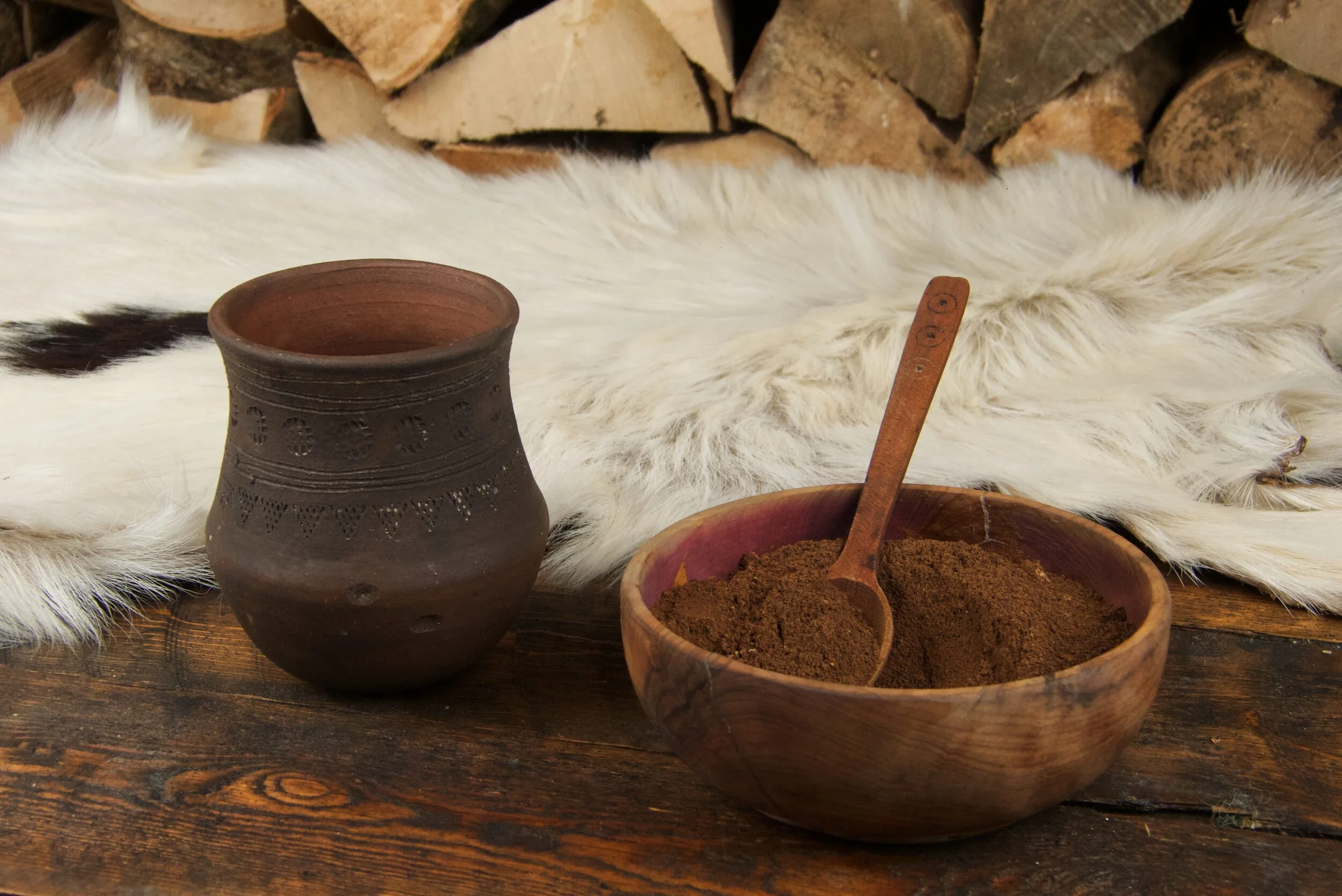Ingredients:
3 tsp dry blood (ask a butcher or check online retailers)
200ml/3/4 cup warm water
500g/2.5 cups bread flour (+ extra for coating)
10g/2 tsp salt
200g/3/4 cup sourdough starter
50g/2.5 tablespoons honey
Method:
Mix the dried blood with the water and whisk to a smooth consistency.
Put the flour and salt into a large bowl and mix together. Add the starter and honey and slowly add the blood solution and mix together to form a dough. You can add more or less water depending on how your dough feels. I find it varies slightly every time.
Tip out onto your worktop and knead for around 10 minutes.
Roll your dough into a ball, and dust with a little flour. Put it into a bowl and cover loosely with a damp cloth, to stop it drying out. Place somewhere warm.
Leave to prove for 3-4 hours, until the dough has roughly doubled in size.
Tip your dough back out onto your work surface and carefully deflate it by poking it with your fingers. Divide the mix into 8 equal pieces. Roll each piece into a ball and coat with a little flour.
Place onto a baking tray, that has been dusted with flour, and leave for another hour or to prove again.
Heat your oven to 200 degrees Celsius and cook for about 20 minutes.
Remove from the oven, the rolls should sound hollow when you tap them on the bottom.
These can also be cooked in the dying embers of a fire.
Leave to cool fully before serving with butter.





